Come on, without the cross, could you tell that it was a Church?
 It cannot be denied that in the years leading up to Vatican II and especially in the post Vatican II years, the architecture of Catholic Churches leaves much to be desired. And that's putting it mildly. Banal, insipid, uninspiring, bland and downright butt ugly. These are the terms that come to mind when perusing the majority of the Churches built in the past 50 years.
It cannot be denied that in the years leading up to Vatican II and especially in the post Vatican II years, the architecture of Catholic Churches leaves much to be desired. And that's putting it mildly. Banal, insipid, uninspiring, bland and downright butt ugly. These are the terms that come to mind when perusing the majority of the Churches built in the past 50 years.![[Independence.jpg]](https://blogger.googleusercontent.com/img/b/R29vZ2xl/AVvXsEga2H-Hxr5l0ENLPnCz0ljbKsKmC31iOyH7F4WsJVN978Rr8ksdF4Cs__nFlYDRwq1VSh9ddV6N7EW-cBNOEkRA13ouQBHHRvK83dgIqW3NArK_sup7sgoP_gL2oJvj4KNd9ntEog/s1600/Independence.jpg)
Did you see Independence Day?
The soft lights of a hundred stained glass panels letting in the radiance of the sun and bathing the dim interiors with it's mystical glows are replaced with unconcealed fluorescent tubes from windowless walls.
Saints, those who let the Light of God shine through
Gone are the soaring vaults and domes that lead the worshipper to look beyond the pale and lift up his gaze to the Heavens.

If you walk in this Church, can you NOT feel that you're somewhere different, a place between Heaven and Earth?
The glorious gilded high altars, lit by candles and lamps, approached by ascending steps and crowned by baldaquins have been replaced by tables unfit for a street corner restaurant.


Standing in this edifice, raised to the glory of God, the worshipper is transported into Heaven as all his senses, the smell of incense, the glorious sound of sacred polyphony and Gregorian chant and the ondrous sight before him all scream out the reality that lies behind the veil

Gone are the mosaics and frescoes that point to the reality of the invisible, of God and Christ enthroned in Heaven with the Blessed Virgin Mary, the angels and the blessed company of the saints who no longer look down from their niches and pedestals to remind the living of the great Communion of those in Christ that death cannot cast asunder.
Instead, we have bare, whitewashed walls that inspire nothing but disgust and boredom. The new bright floodlights dissipating all sense of mystery and revealing all the cobwebs and cracks and imperfections, not least of the people and their tasteless T-shirts sitting near us.
 So, we come to the question. Is there a preferred form, a preferred type of architecture for the building of a Church? To answer that question, we must first ask what is a Church? Is it merely just a gathering place of God's people, the ekklesia or qahal, the assembly of the faithful? Is just functional? Then any old place with a roof would do.
So, we come to the question. Is there a preferred form, a preferred type of architecture for the building of a Church? To answer that question, we must first ask what is a Church? Is it merely just a gathering place of God's people, the ekklesia or qahal, the assembly of the faithful? Is just functional? Then any old place with a roof would do.But is the Church building merely that, merely functional? Does it serve no other purpose? In the theology and tradition of the Catholic Church, which draws from the springs of the Jewish temple and the Mosaic tabernacle of old, the Church building is an intersection, a meeting place, not only of God's people, but a meeting place between God Himself and His people.
Scale replica of Solomon's Temple
In the confines of the Church, the upward movement, the quest and yearning of the people for God is reciprocated by God's condescension, God's descent to meet with, to dwell in and to sup with His people.
The ancient Israelites as well as Solomon spared no expense to give God the best because that it what He deserved, not because there were no poor people in Israel.
Scale replica Herod's Temple
To tell the poor now that they deserve a plain little Church, with white washed walls and a plain old wooden altar is to tell them that their God and their Mass is worth less than the Mass of the rich folk across the city. It is precisely to underscore that sameness of the Mass, the oneness of the God that is being worshipped by all His children, that regardless of where the Church is built, proper care needs to be taken to ensure that it is a worthy and fitting place for God's presence. The poor deserve no less than anyone else and the God of the poor is the same God and the Mass of the poor is the same Mass that is offered on the High Altar of St. Peter's.
The Church is the place where the sacrifice of Christ, completed once for all at Calvary, is once again made present on the altar and is re-presented to the Father by the priest in persona Christi, the same Christ who is High Priest, Altar and Victim. In the Church, though still obscured by the veil, Heaven and Earth unite as we join with the angels and saints in their unending hymn of praise and worship of the One on the Throne. The Church then is the Gate of Heaven, the Porta Caeli. When you enter the Church, you must transition from the world outside to another where the veil is less opaque and the reality that is Heaven shines through more clearly.
The Church is also the place where the Real Presence of Christ dwells corporally in the Tabernacle. God is everywhere, but in the Church, in the Golden Tabernacle upon the High Altar we can point and say 'There is God'. So, the Church is truly the House of God, the Domus Dei, Beth-El. Is then the tabernacle a fitting footstool of God's majesty, to Whom the angel chorus of Sanctus, Sanctus, Sanctus continually envelops? Does the Church then fittingly manifest the reality contained in the Tabernacle? When a non-Catholic or non-Christian sees the Church for the first time, can he tell that it is a special place and not any old hall? When he steps in, will he realize what the focus of the Church is, which is it's source and summit? Can he discern that something special is there, up on the High Altar where angels bend low? Can he feel the Presence that the perpetually burning lamp signifies?
The Church is also the living symbol of the Presence of the Church and of God on the Earth, the City on the Hill, the Lamp which needs to be placed on high so that it's light might illuminate the world. As such, it would need to be recognized as a Church. I think it's a fairly simple principle. When you think of a Church, you'd probably imagine a building with spires, a bell tower and perhaps even a dome. A cross, certainly. A big front door. You'd want to be able to tell it apart from, say, a factory, or an office block, a mosque or even a spaceship.

![[Independence.jpg]](https://blogger.googleusercontent.com/img/b/R29vZ2xl/AVvXsEga2H-Hxr5l0ENLPnCz0ljbKsKmC31iOyH7F4WsJVN978Rr8ksdF4Cs__nFlYDRwq1VSh9ddV6N7EW-cBNOEkRA13ouQBHHRvK83dgIqW3NArK_sup7sgoP_gL2oJvj4KNd9ntEog/s1600/Independence.jpg)
But this? A converted alien spaceship?
The value of the Church building itself as a sign of witness and identity within a community is recognized by the enemies of the Church (for those of you who are more politically correct than I am, then insert your favourite word for the enemies of the Church here). That's why in many Muslim countries such as Malaysia, there are caps on the height of the bell tower/spire and the size of the cross in order not to 'challenge' the dominance and supremacy of their false religion. Muslims are able to recognize the value and symbolism behind the Church building and what it stands for. Even secular non-Christians know this. That's why when they want to portray a Church, they'd go for a traditional building and not a square, whitewashed warehouse. This also applies to priests and nuns. When the secular world wants to portray clergy or religious, they'd trot out the Roman collars and habits and veils. It's common sense and a mark of identity. But somehow, our nuns and priests don't seem to get it. But I digress.
If it looks like a Church...
Anyway, back to Church architecture. The Church needs to look like a Church or what the whole world expects a Church to look like in order to manifest it's presence as leaven within a community. It can't do that if it looks like something else. Yes, different tastes and cultures have different ideas of what a Church should look like, but the bottom like is, there is such a thing as a common sense notion of 'Churchiness'. So, again, a Church needs to look like a Church.
What does this look like?
Having said all that, why do some of our Church designers insist on bucking the trend of common sense and erecting such monstrosities as the LA Cathedral (aka Taj Mahony/cheesecake cathedral) and the Cathedral of Christ the Light? These buildings, which defy common sense, financial sense, anaesthetical sense and all other existing senses need to be explained, and explained and explained for us poor simple folk to be able to comprehend their convoluted, nonsensical designs.
Looks like an ugly mall to me.
Or perhaps an ugly government building or a low cost flat, or a jail or a hospital. But never a Church.
Traditional, cruciform, ad orientem Churches explain themselves. People get it, well, the general idea, anyway, when they look at it. There doesn't have to be tons and tons of brochures and slideshows and whatnot to convey the symbolism. If there are 3 coequal domes, then they symbolize the Trinity, if there are 4 smaller domes surrounding one large one, then they sumbolize the 4 evangelists and Christ, etc.
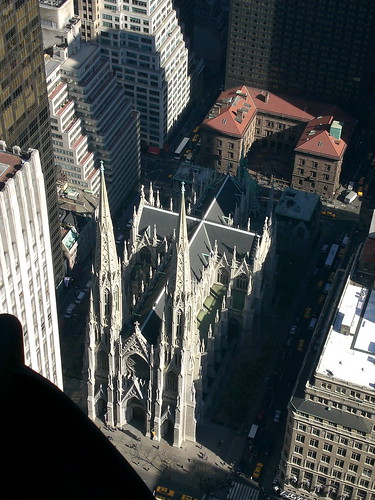
People have preconceived ideas, embedded in the popular psyche, of what certain saints and what Christ is supposed to be represented as. Drastically changing the look of Christ or of the saints defeats the purpose of having them there as an aid to prayer because people can't visualize the reality that the icon or statue symbolises.
One of the few Churchy parts of the Taj Mahony are the parts incorporating elements from the old Cathedral, such as these stained glass windows

Does this look like the Blessed Virgin Mary to you?

I mean, come on, do you know how much explaining it's going to take to convince someone that this is a representation of Holy Mary?

Regardless of which angle you look, this thing defies every image we have in our mind of the Blessed Virgin. The sculpture then is meaningless.


In the Taj Mahony, angels apparently look like this.

I don't know about you, but they sure scared the heck out of me


And what is the symbol above supposed to symbolize?
And the hands below? Jesus I know, but the hands at the bottom? Why can't they just leave Jesus alone and take their junk to where it belongs?

With this understanding then, we should ask ourselves:Is our Church a fitting place for God's presence? Is it a worthy dwelling place for God, the author of beauty and our Creator. Is this really the best we can do? If not, then why and what can we do to make it so?
![[Unam Sanctam]](https://blogger.googleusercontent.com/img/b/R29vZ2xl/AVvXsEiymQ2adTjpZ1ABhPBbBBquiPCxeQrc4Jy_97vOikT0wGQeJleriiXQy6ebnb0jrYe-TfvcK77txStB4aIwVAdD41ZdMkVfNtFGC0JX6LBV9B8mfeRZaIAM7Sj-011ag3DiKQzv/s1600/headerdivinemercy.jpg)










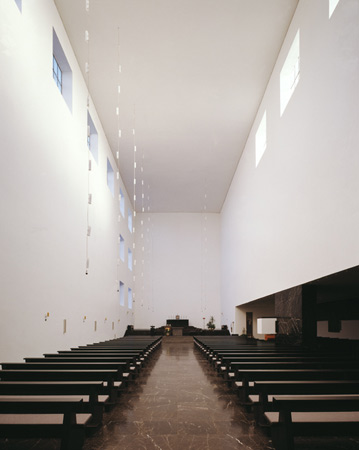
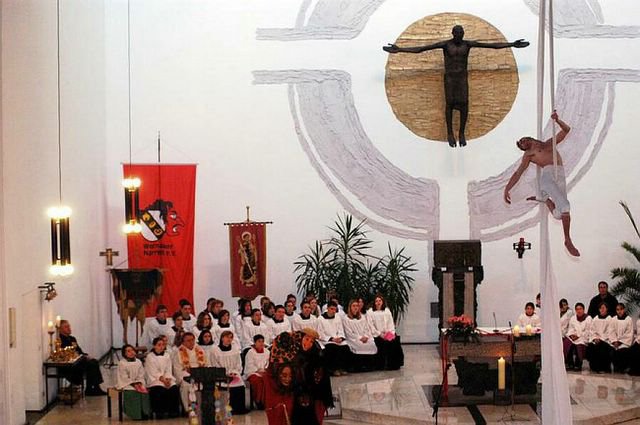































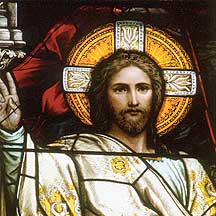
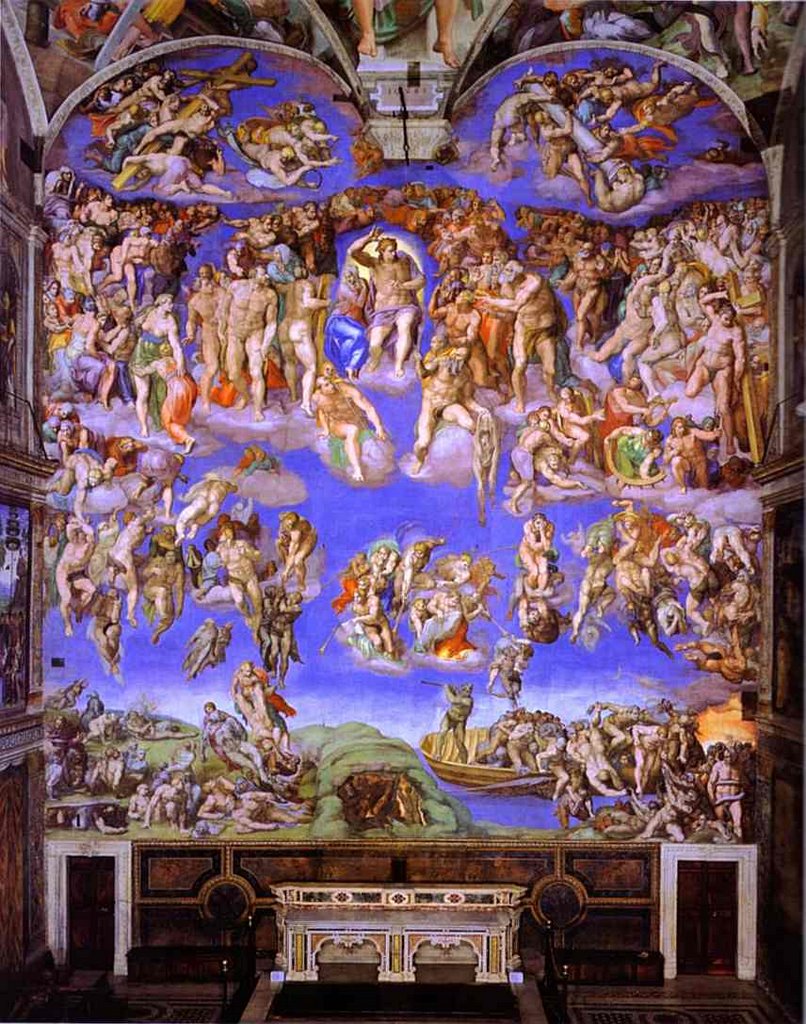


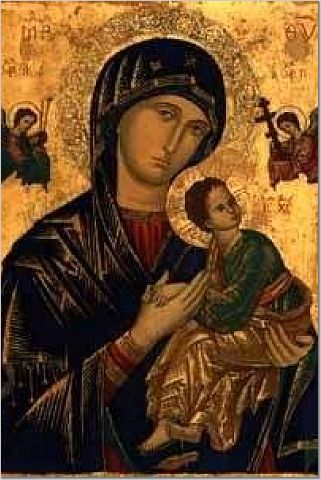



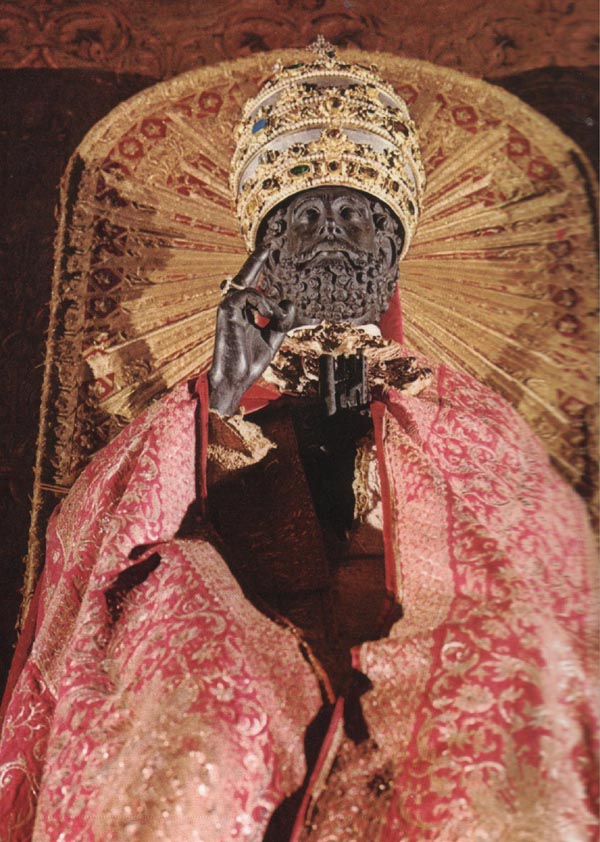
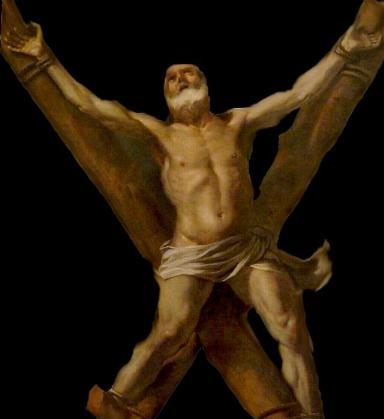

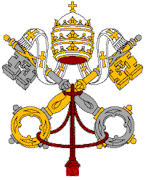


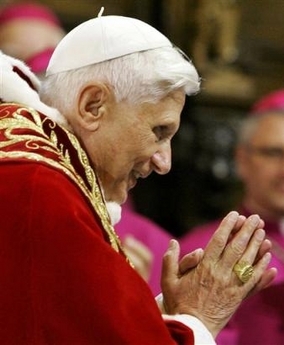






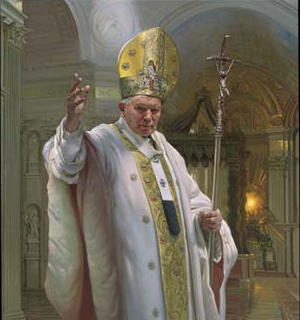
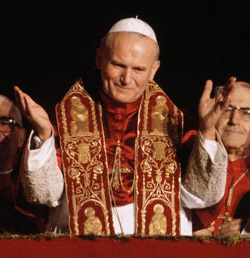
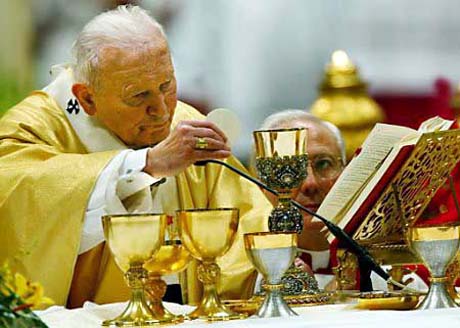
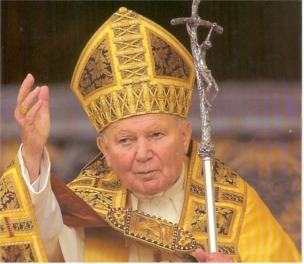






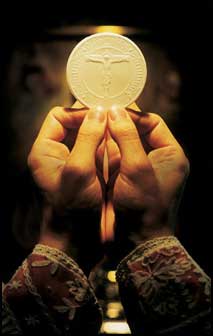
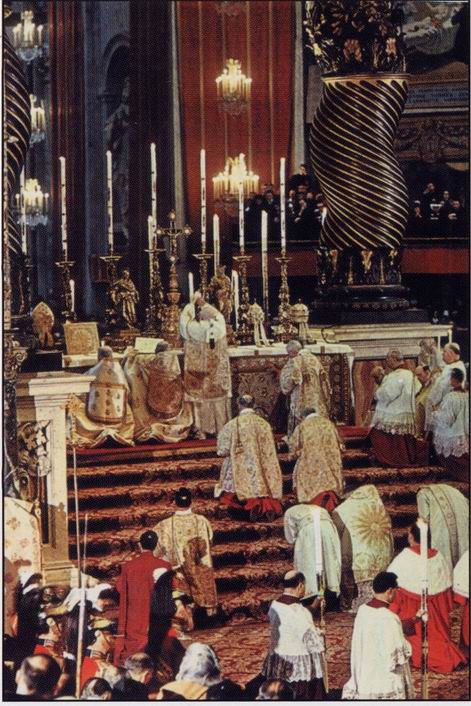



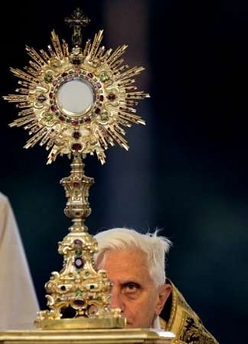


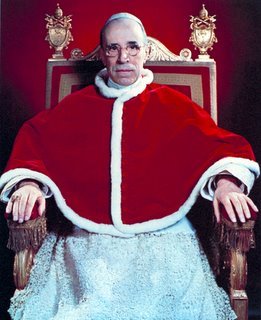




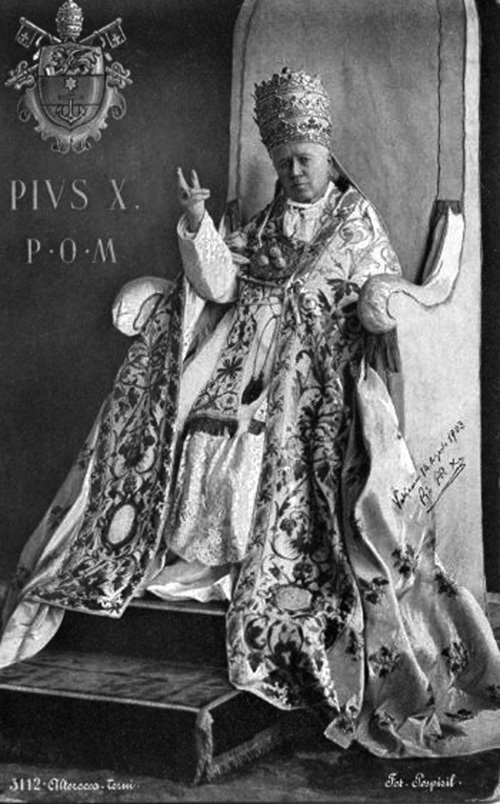










15 comments:
Brilliant post Andrew, obviously it took you a lot of time to compose but a very thorough post. It'll be good for when you write your book!
A book? Now that sounds like a great idea, you should definitely do that Andrew.
It's odd, but in that first picture I couldn't tell it was a church even with the cross. Looks more like a museum or hospital than anything else.
On the whole, a good post. I made similar observations back in July 2005 here.
Fantastic post, Andrew! Your picture captions alone are worth the price of a book.
Wonderful blog; keep up the good work!
I realise this question is way off topic, but I think you are the best person to answer this question, being a Catholic in a mainly muslim country. Can Catholics eat halal meat? Lately most of the fast-food restaurants in my area have broadcast the fact that their food is halal, even though muslims are a tiny minority in our overwhelmingly Catholic town. This has unnerved many people in my town & I've heard that halal food is sacrificed to the islamic god. Living in Ireland, I've never eaten any halal food before as far as I know. As a result I've boycotted these fast-food shops until I know what's fact & what's fiction.
Hope you can help. Thanks.
New churches are usually tragedy. Luckily there are many old beautiful churches in Poland.
A book? Haha... what an amoosing thot! Thanks, Joee, MrSmith and Guadalupe. I'll have a special 3 boom run just for you, haha, cos no one else is going to be interested.
Fra. Lawrence, great observations. If I had known, I would have just directed ppl to your post instead!
And anonymous, your comment had me chuckling aloud. A tragedy.... indeed =)
Danny? Danny Donellan? If you're Danny Donellan, from Ireland, then Hey! Long time no see! Whatever happened to your blog?
If you're not, then hey anyway.
Regarding your question, here's the short answer.
Halal is an Arabic work meaning permissible and is akin to the Hebrew kosher.
To be halal, certain requirements must be met and one of them is that the name of allah (bismillah allah-hu akbar-in the name of allah, allah is great) needs to be said at the moment of slaughter. So, yes, there are sacrificial connotations involved.
But the Holy Bible says this:
Now concerning things sacrificed to idols, we know that we all have knowledge Knowledge makes arrogant, but love edifies.
If anyone supposes that he knows anything, he has not yet known as he ought to know;
but if anyone loves God, he is known by Him.
Therefore concerning the eating of things sacrificed to idols, we know that there is no such thing as an idol in the world, and that there is no God but one.
For even if there are so-called gods whether in heaven or on earth, as indeed there are many gods and many lords,
yet for us there is but one God, the Father, from whom are all things and we exist for Him; and one Lord, Jesus Christ, by whom are all things, and we exist through Him.
2nd Corinthians 8:1-6
According to Scripture then, regardless of who offers what to whom, there is only One God, the Father, Son and Holy Spirit, so we should not fret because we have this knowledge.
However, the same passage continues this way:
However not all men have this knowledge; but some, being accustomed to the idol until now, eat food as if it were sacrificed to an idol; and their conscience being weak is defiled.
But food will not commend us to God; we are neither the worse if we do not eat, nor the better if we do eat.
But take care that this liberty of yours does not somehow become a stumbling block to the weak.
For if someone sees you, who have knowledge, dining in an idol's temple, will not his conscience, if he is weak, be strengthened to eat things sacrificed to idols?
For through your knowledge he who is weak is ruined, the brother for whose sake Christ died.
And so, by sinning against the brethren and wounding their conscience when it is weak, you sin against Christ.
Therefore, if food causes my brother to stumble, I will never eat meat again, so that I will not cause my brother to stumble.
2nd Corinthians 8:7-13
So, basically, there's no theological reason not to eat halal meat as there is no God but the Blessed Trinity and offering food to allah or idols or whatnot is like offering food to a chair or bicycle. It's meaningless as there is no other God. But, for the sake of those who had departed from idol worship and had weak concienses, St. Paul advises the Conrinthians to exerce their liberty with caution lest these new ones, with little knowledge and weak conciences fall and are scandalized. But I guess in Ireland, there's no such danger as there are no people who have departed from idol worship, so please go ahead, eat all you want and educate and advise your friends and family not to have such scruples and to eat all they can too.
Certainly, we who live in Muslim majority countries do! Otherwise, we'd all be vegetarians and starve!
I hope the answer was helpful, Danny. God bless.
Thanks a million Andrew, your response has been a big help & I will have no problem eating that halal now that I know where I stand. I guess there has been a little scare-mongering concerning this issue in my town.
As for my blog, I quit blogging a few months ago but I might start it again. I still manage to read your blog though. Thanks again for clarifying halal for me.
I would abstain from halal meat because the martyrs died so as not to offer sacrifices to the false gods of the romans. I would avoid it to honor God.
Anonymous, Muslims believe in the same God so I don't see what the problem is here. As Catholics we obviously do not subscribe to the same Muslim vision of God but we are at the ned of the day worshipping the same God. Allah is Arabic for God that's why you'll find Arab Christians praying to Allah as well.
Schwartz's Corpus Christi Church, Aachen (picured above "What the heck were they thinking?" in your post) was built c.1930 and ought not be confused with mediocre buildings of recent years. If you read up on Schwarz and his work, you'll find he knew exactly what he as doing. See also Pawson's new Cistercian abbey church at Novy Dur. These two churches are perfectly consistent with Catholic tradition. It just might not be to one's taste, which is a different matter.
Incidentally, Unam Sanctam was issued by Boniface VIII, not VII.
There is a new Blog about Halal / Haram issues be sure to check out:
Eat Halal
Most worship spaces are tacky. Catholics fill them with statues and other gaudy frilly things in the name if Tradition that are not only simply ugly compared to modern standards but are absolutely antithetical to the true meaning of Christianity.
And of course, you, Anonymous, would know the true meaning of Christianity, which has, no doubt, been hidden away by the Church/was corrupted after the conversion of Constantine/lost after Jesus when Christianity as we know if was invented by Paul of Tarsus/(insert your pet theory here).
Perhaps, in your charity, you would enlighten me on what the TRUE meaning of Christianity is, since everybody has got is so wrong for so long? Thank you.
Post a Comment